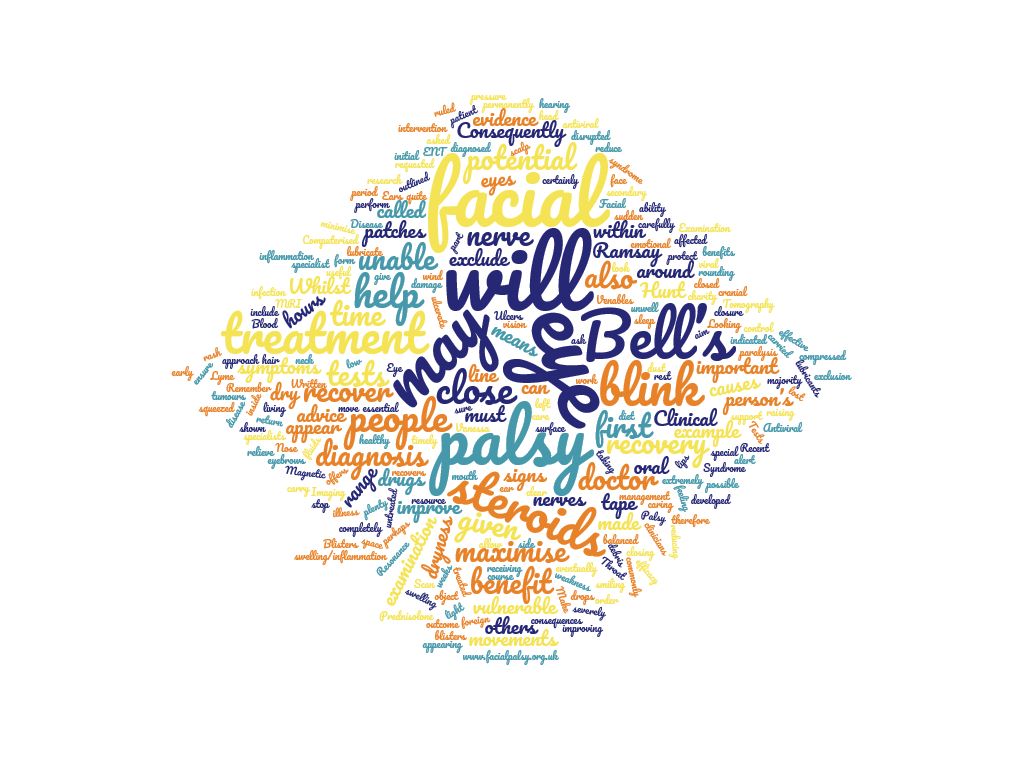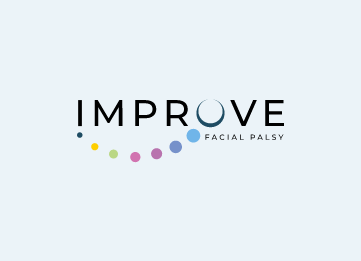The name ‘Bell’s palsy’ comes from the 19th century Scottish anatomist and surgeon Sir Charles Bell. He discovered that severing the seventh cranial nerve known as the ‘facial nerve’, causes facial paralysis. People diagnosed with Bell’s palsy have not had their facial nerve severed but develop inflammation around the facial nerve. This results in the nerve being squeezed or pinched, as it is housed in a hard, bony channel inside the skull. The pressure on the nerve, from the inflammation, temporarily interrupts the blood supply and nutrients to the facial nerve. The pressure also interrupts the flow of electrical impulses being carried from the brain, along the nerve, to the facial muscles. Consequently, the facial muscles are unable to receive electrical impulses which help keep the muscles firm and which control muscle movement.
Bell’s palsy is the most common cause of acute facial paralysis. Acute facial paralysis can be caused by other conditions but Bell’s palsy accounts for approximately 80% of all cases. It affects between 20 to 30 per 100,000 people each year. The National Institute for Health and Care Excellence (NICE), stated in its Clinical Knowledge Summaries, May 2019, that Bell’s palsy occurs most commonly between 15 – 45 years of age. Its commonality amongst younger people may be due to the fact that women, in the last three months of their pregnancy, are at increased risk of developing Bell’s palsy.
Causes
Currently no conclusive cause of Bell’s palsy has been established but those newly diagnosed feel unwell. Whilst no certain cause has been established, links have been made with viruses including herpes and influenza. It is thought that people may be more susceptible to developing Bell’s palsy if they have a weakened immune system or have experienced a period of stress. Bell’s palsy can sometimes occur after a flu like illnesses or following ear and throat infections.
Symptoms
Symptoms appear over hours and days usually without warning and peak within 72 hours. The majority of those affected (70%), will recover within the first few weeks as the inflammation settles. The list below outlines the main symptoms:
- Partial or complete paralysis of the facial muscles on the affected side of the face. This can be accompanied by the facial muscles drooping on the affected side which may be more visible in older people. On rare occasions Bell’s palsy can affect both sides of the face but only in approximately 1% of cases.
- Facial expression, on the affected side, is absent or incomplete although for the majority of people this will get better within a few days or weeks.
- Some people may experience a sharp pain in their inner ear during the onset of their symptoms and for several days afterwards.
- Loss of taste or altered taste sometimes described as ‘metallic’.
- Sensitivity to loud noises.
- Difficulty in closing the eye or blinking on the affected side of the face which causes the eye to become dry. The body responds to this by producing excess tears and the eye waters. It is the body’s way of trying to compensate. However, it is still extremely important that you use eye drops or ointments to keep the eye lubricated even when the eye is very watery.
- Difficulty eating and drinking due to weakness of the muscles around the mouth and cheek. This can often result in food, drinks and sometimes saliva leaking from the corner of the mouth on the affected side. Food may also get trapped inside the affected cheek.
- Difficulty pronouncing certain words especially when they contain the sounds ‘p’ or ‘b’. This is because the affected side of the mouth is weak, and the lips may not seal when trying to make these sounds.
- Blocked or streaming nose on the affected side due to weakness of the muscles around the nose.
The speed of recovery from the symptoms listed above will depend on the degree of facial nerve injury.
What is the difference between Bell’s palsy and Stroke?
- Bell’s palsy occurs over hours and sometimes days with symptoms peaking at 72 hours. However, facial paralysis following a stroke happens suddenly and immediately.
- The pattern of facial paralysis in Bell’s palsy affects the whole side of the face. However, facial paralysis following stroke, affects the muscles on the lower half of the face only. The upper part of the face is preserved so the person with a stroke will still be able to raise their eyebrows, close their eyes and blink.
- Bell’s palsy only affects the facial nerve whereas in stroke the brain is also injured. As a result, people with stroke may experience weakness in their limbs making it difficult for them to sit upright, stand or walk. A person with Bell’s palsy will not experience any limb weakness.
- Bell’s palsy does not affect a person’s ability to think clearly or their ability to speak in a coherent fashion or understand the spoken word. A person who is experiencing a stroke can become confused, lose their power of speech and may not understand what people are saying.
In summary, because Bell’s palsy involves a single insult to one nerve only, the facial nerve, as it leaves the brain and makes its way towards the face, the symptoms are isolated to the facial muscles and impacts on facial muscle function. If the sensory elements of the facial nerve are damaged, then symptoms of altered taste and sensitivity to sound can also occur. Symptoms following stroke are caused by injury to the brain itself which is responsible for many different functions including the power of speech, the ability to understand the spoken word, thought processes and movement.
What other conditions can cause facial paralysis?
There are many different causes of acute facial paralysis, but Bell’s palsy is the most common and is responsible for 80% of cases. Below is a list of other conditions which may affect the facial nerve and cause facial paralysis. The list is not exhaustive but highlights some of the more common conditions affecting the facial nerve.
- Acoustic Neuroma is also referred to as a Vestibular Schwannoma. This is a benign (non-cancerous) tumour on the hearing nerve (the eight cranial nerve), which due to its close proximity to the facial nerve, can cause facial paralysis.
- Tumours of the salivary gland called the ‘parotid gland’. This is because the facial nerve travels through the parotid gland and a tumour in this position can damage the facial nerve. Tumours can be benign (non-cancerous) or malignant (cancerous).
- Facial nerve tumours which are almost always benign and also extremely rare. However, they can cause pressure on the facial nerve and lead to facial paralysis.
- Lyme disease – a bacterial infection caused by a tick bite. This infection can affect joints and the nervous system including the facial nerve.
- Ramsay Hunt Syndrome – a complication of Shingles. It is a shingles infection which affects the facial nerve. Shingles is caused by the same virus which causes chickenpox known as the Varicella Zoster Virus. As a result, the facial nerve becomes inflamed and irritated.
- Trauma to the facial nerve which can occur with skull fractures, head injuries and facial lacerations often as a result of either sharp or blunt trauma.
- Birth trauma which refers to physical injury to the facial nerve sustained during the delivery of a baby.
- Congenital conditions which means that something has interrupted the development or maturation of the facial nerve whilst the baby is growing in the womb. This can be a complicated category because there may be other developmental problems affecting the baby as it grows. For example, Moebius Syndrome, a rare neurological disorder which can affect both sides of the face.



